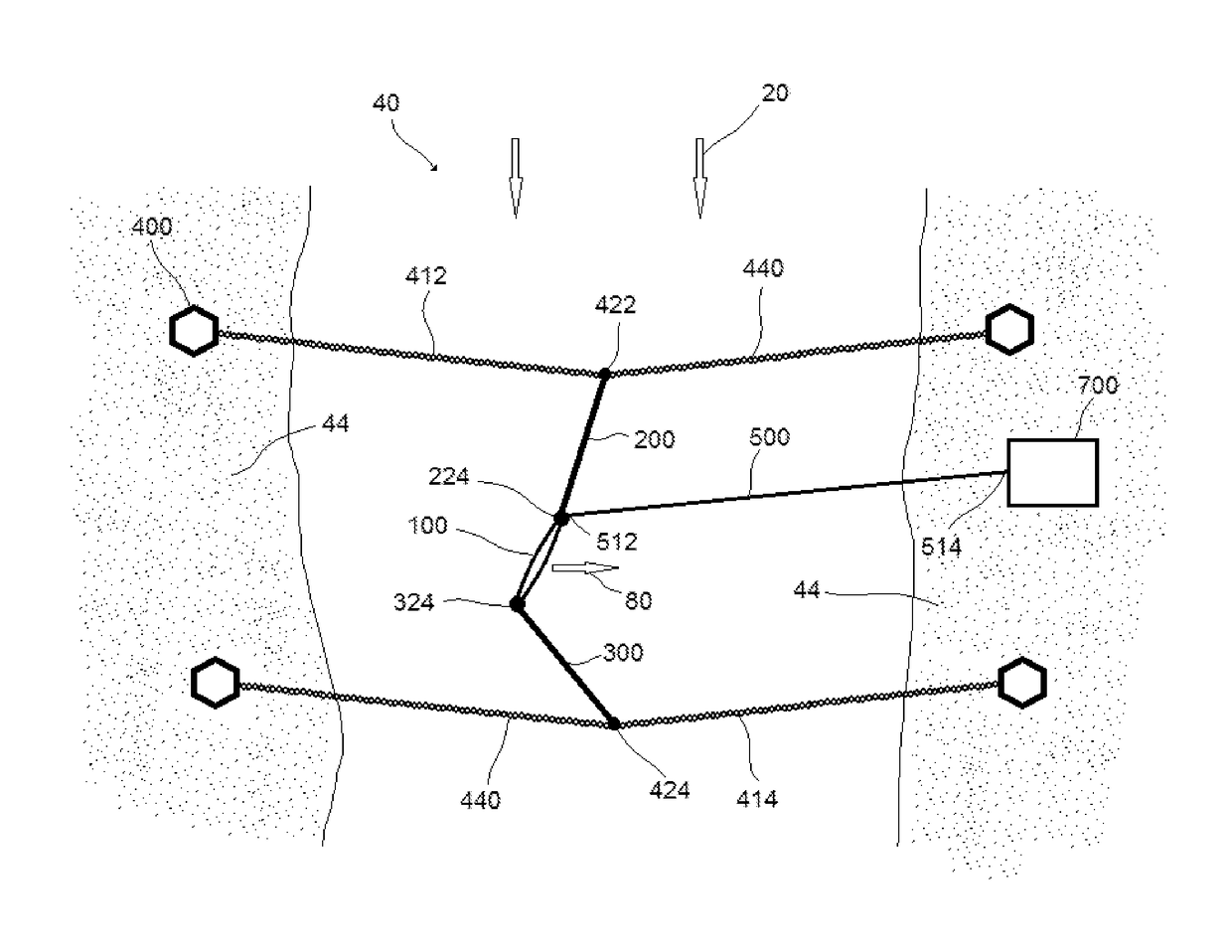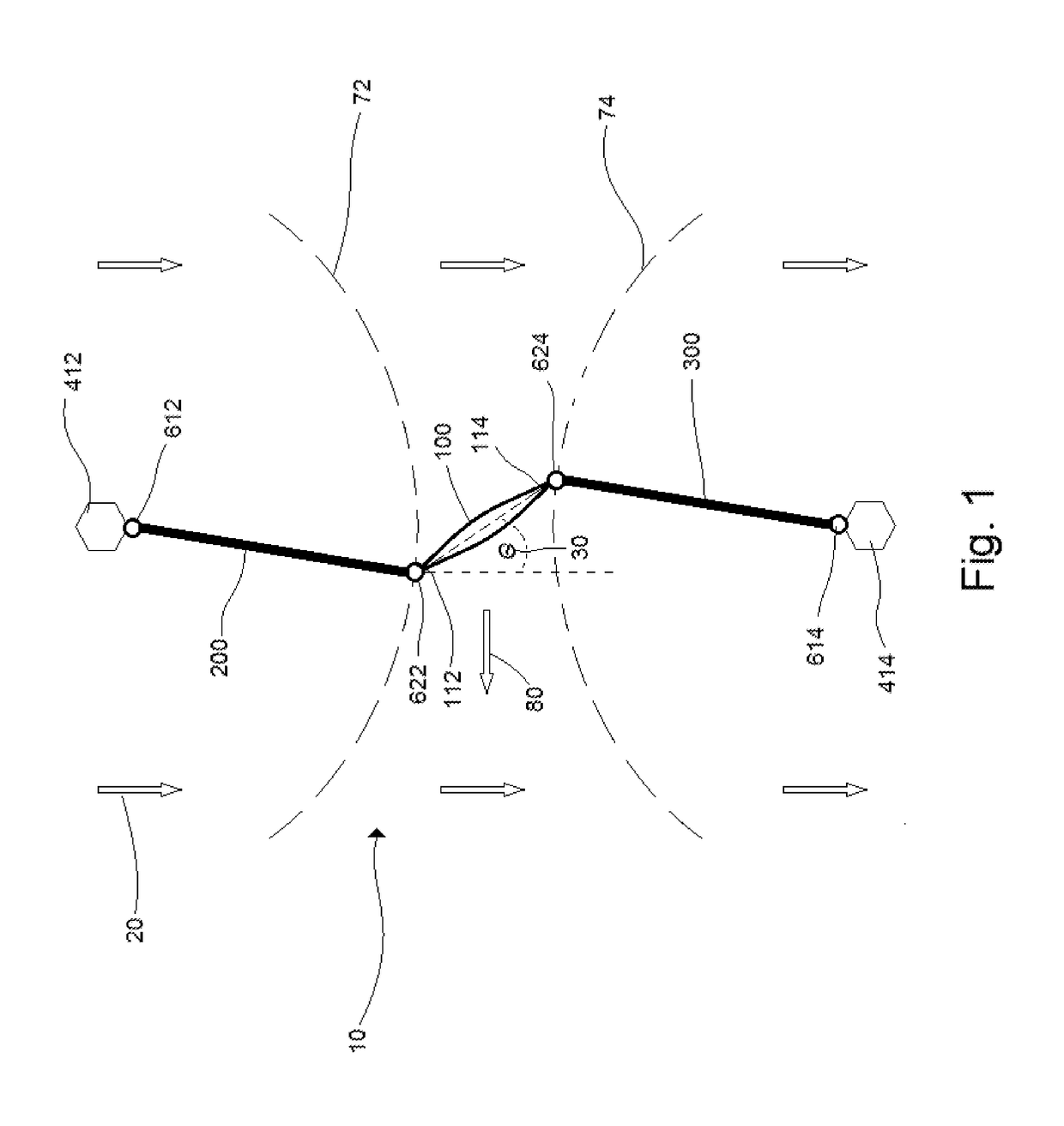Reciprocating fluid energy device
- Summary
- Abstract
- Description
- Claims
- Application Information
AI Technical Summary
Benefits of technology
Problems solved by technology
Method used
Image
Examples
Embodiment Construction
[0056]In one embodiment, the present invention discloses a reciprocating device 10 for extracting energy from a fluid flow 20. The fluid flow 20 may be water, air, or any other fluid. The device 10 comprises a foil 100, an upstream support member 200, a downstream support member 300, and a frame 400. Optionally, it also comprises a force transfer mechanism 500 and a generator 700.
[0057]A foil creates lift when fluid passes over its surfaces. The leading edge of the foil splits the fluid, with one component of the split fluid running along one surface of the foil and a second component of the split fluid running along the opposite surface of the foil. When the foil is angled relative to the direction of fluid flow (the “angle of attack”), the component of the fluid passing over the surface of the foil angled away from the direction of fluid flow moves faster than the component of the fluid passing over the surface of the foil angled towards the direction of fluid flow. Because of the...
PUM
 Login to View More
Login to View More Abstract
Description
Claims
Application Information
 Login to View More
Login to View More - R&D
- Intellectual Property
- Life Sciences
- Materials
- Tech Scout
- Unparalleled Data Quality
- Higher Quality Content
- 60% Fewer Hallucinations
Browse by: Latest US Patents, China's latest patents, Technical Efficacy Thesaurus, Application Domain, Technology Topic, Popular Technical Reports.
© 2025 PatSnap. All rights reserved.Legal|Privacy policy|Modern Slavery Act Transparency Statement|Sitemap|About US| Contact US: help@patsnap.com



